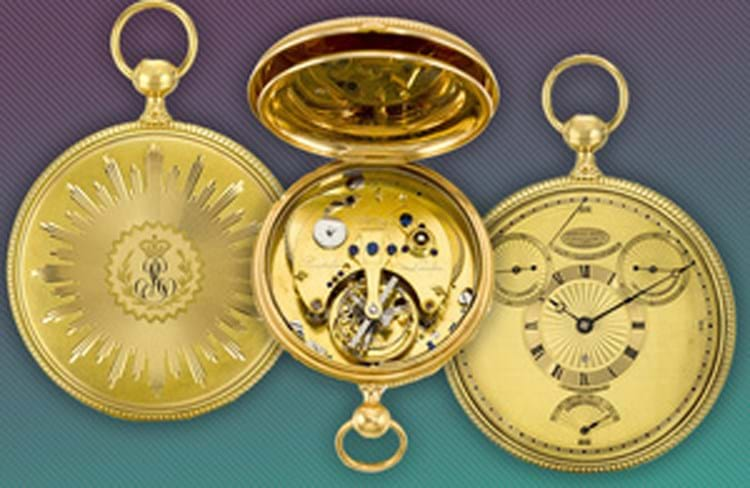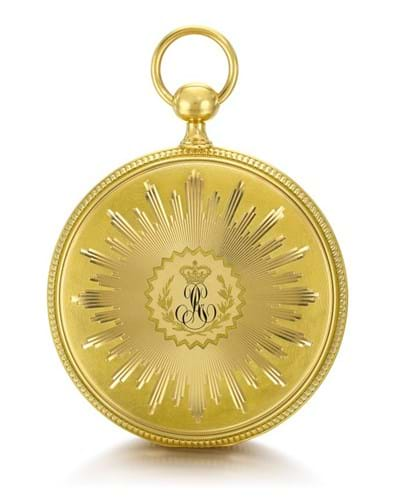The watch was sold at auction at Sotheby’s on July 14, 2020, and the owner applied for an export licence. Now a UK institution has until April to raise £2.4m (the hammer price plus fees and VAT) to keep it in the country.
The decision by the Department for Digital, Culture, Media and Sport (DCMS) follows the advice of the Reviewing Committee on the Export of Works of Art and Objects of Cultural Interest (RCEWA).
The RCEWA made its recommendation on the grounds of the watch’s outstanding significance for the study of British collecting, horology and the social and political history of Britain and Europe.
The Breguet four-minute Tourbillon watch was made in 1808 for King George III and is thought to be one of fewer than 10 tourbillon watches known to exist.
Designed and made by Abraham-Louis Breguet, it was part of the collection of the king and Queen Charlotte.
The watch has a certificate No 4178 which was issued by the Breguet firm in Paris on June 9, 1808, showing it was issued to its agent in London, Recordon, for King George III. The watch was signed by Recordon, rather than Breguet, perhaps to disguise the sale to the British king during the Napoleonic Wars.
The king was a keen horologist and, as well as engaging leading horologists of the day, he actively involved himself in the creation of pieces that he commissioned. The Royal Collection holds manuscripts written in the king’s hand in which he details the procedure for assembling and disassembling watches.
Watches of this style are not currently represented in any public collection in the UK.
RCEWA committee member Pippa Shirley said: “This watch is a tour-de-force of the art of horology. At the very cutting edge of technology, the beauty of its mechanism is matched by the restrained elegance of its case.”
The watch had been part of the Five Centuries of British Timekeeping Exhibition at Goldsmiths Hall in 1955 when it was lent by Malcolm Gardner. It was later sold on November 9, 1999, at a Sotheby’s auction for a premium-inclusive £551,500.
The decision on the export licence application will be deferred until April 28 and could be extended until September if a serious intention to purchase it is made.
Mughal silver Durbar set
Also recently temporarily barred from export by DCMS was a £730,000 Mughal silver Durbar set once owned by Clive of India.
It comprises 19 items including rosewater sprinklers with stands and caskets for pans, used in formal court assemblies. The pieces in this set were listed in an inventory of Clive’s possessions made in 1766.
Although a controversial figure, Major-General Robert Clive, 1st Baron Clive, known as ‘Clive of India’, was the first British Governor of the Bengal Presidency and is credited - along with Warren Hastings - with laying the foundations of the British Empire in India.
DCMS made its decision based on RCEWA recommendations which said the Durbar set has “outstanding significance for the study of silver and the culture of court etiquette, and diplomatic gift-giving between Britain and India within the broader Mughal context”.
The decision on the export licence application for the Durbar set will be deferred until April 14, and could be extended until September if a serious intention to purchase it is made at the recommended price of £730,000.








